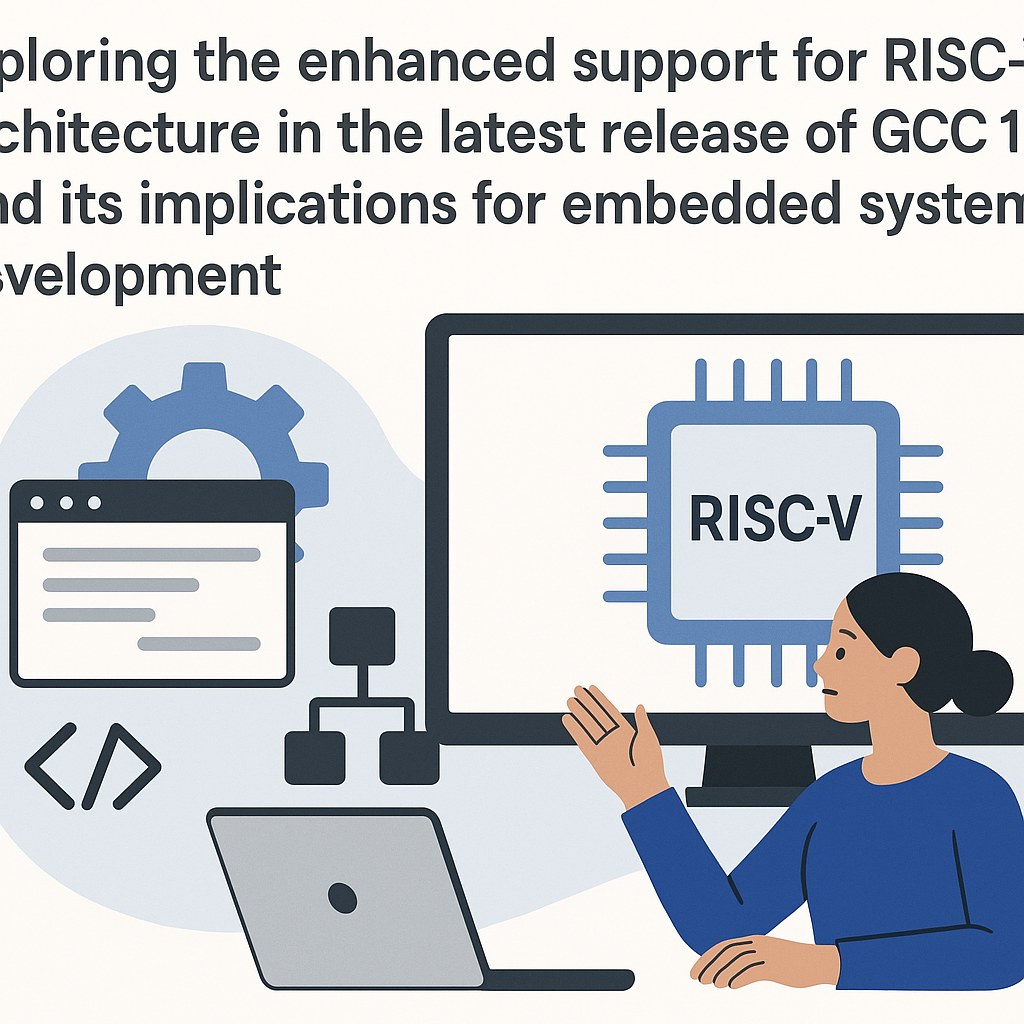Introduction
The release of GCC 12.2 marks a significant milestone for developers working with RISC-V architecture. With enhanced support for this open standard instruction set architecture (ISA), GCC 12.2 not only improves the toolchain’s capabilities but also broadens the scope for embedded systems development. This blog post delves into the key enhancements brought by GCC 12.2 for RISC-V, their implications, and how they can influence the future of embedded systems.
What is RISC-V?
RISC-V is an open standard ISA that promotes flexibility and scalability. Unlike proprietary ISAs, RISC-V allows developers to customize the architecture according to their specific needs. This has made it a popular choice for both academic research and industrial applications.
Key Features of RISC-V:
- Modularity: RISC-V supports a variety of extensions, enabling tailored implementations.
- Open Source: Being open-source, it encourages collaboration and innovation.
- Scalability: Suitable for a wide range of applications, from microcontrollers to supercomputers.
Enhancements in GCC 12.2 for RISC-V
The latest release of GCC includes numerous improvements specifically targeted toward RISC-V architecture, enhancing both performance and usability. Here are some notable enhancements:
1. Improved Code Generation
GCC 12.2 introduces advanced optimizations that lead to more efficient code generation for RISC-V. The enhancements include:
- Better use of registers, reducing memory access times.
- Advanced loop optimizations that improve execution speed.
- Enhanced inlining for common functions, contributing to reduced overhead.
2. Support for New RISC-V Extensions
The new release includes support for several recently proposed RISC-V extensions, such as:
- Vector Extensions: For handling vector computations efficiently.
- Bit Manipulation Extensions: To facilitate operations common in networking and cryptography.
This support allows developers to leverage cutting-edge features in their applications, ensuring that they can build more powerful and efficient systems.
3. Enhanced Debugging Capabilities
Debugging is crucial in embedded systems development, and GCC 12.2 enhances this aspect with:
- Improved support for GDB, enabling better debugging experiences.
- Enhanced error messages that provide clearer insights into code issues.
- Improved integration with IDEs, allowing for more effective development environments.
Implications for Embedded Systems Development
The advancements in GCC 12.2 for RISC-V have several implications for embedded systems development:
1. Increased Performance
The performance improvements from better code generation and optimized execution can directly impact the efficiency of embedded applications. Developers can expect:
- Faster processing times for time-sensitive applications.
- Reduced power consumption due to optimized resource use.
2. Greater Flexibility
With the addition of new RISC-V extensions, developers have the flexibility to implement customized solutions for specific applications. This can result in:
- More tailored products that meet exact requirements.
- Innovative applications in fields like IoT, automotive, and consumer electronics.
3. Enhanced Community Support
The open-source nature of RISC-V encourages collaboration and community involvement. With the advancements in GCC 12.2, developers can:
- Contribute to a growing ecosystem of tools and libraries.
- Share insights and improvements with peers, accelerating development.
Conclusion
GCC 12.2’s enhanced support for RISC-V architecture represents a crucial development in the world of embedded systems. The combination of improved performance, flexibility, and community support opens the door for innovative applications and solutions. As the RISC-V ecosystem continues to grow, developers should take advantage of these enhancements to push the boundaries of what is possible in embedded systems development.



